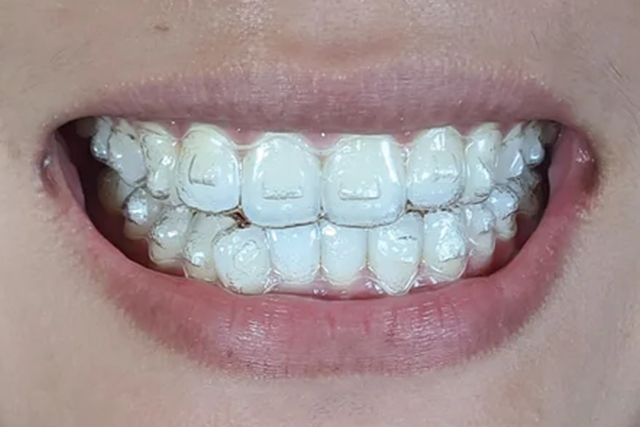Invisalign vs. Traditional Dental braces: Which Choice Is Right for You?
When taking into consideration orthodontic treatment, the option in between Invisalign and traditional braces provides numerous essential variables that merit cautious analysis. Invisalign uses a very discreet option with detachable aligners, while traditional braces supply an extra noticeable yet effective solution for serious misalignment.
Introduction of Treatment Options

In comparison, typical braces are composed of steel brackets and cables that are adhered to the teeth. This approach applies constant stress gradually to attain alignment. While efficient for intricate orthodontic issues, standard braces need normal brows through for modifications and can posture challenges in preserving dental health as a result of the difficulty of cleaning up about brackets and cables.
Both alternatives have their benefits, and the choice frequently pivots on certain oral problems, lifestyle choices, and person compliance. Ultimately, seeking advice from an orthodontic professional is crucial for figuring out one of the most appropriate therapy plan tailored to individual requirements. Recognizing the subtleties of each choice can significantly affect the total success of orthodontic treatment.
Visual Factors To Consider
A substantial aspect influencing the selection between Invisalign and traditional braces is the visual appeal each therapy provides. Invisalign aligners are crafted from clear plastic, making them basically unnoticeable when worn.
In comparison, standard dental braces contain steel brackets and cords, which can be a lot more noticeable. While improvements in orthodontic modern technology have caused the development of smaller sized brackets and colored elastics, standard dental braces still maintain a more obvious profile. For some people, the presence of braces may prevent them from seeking needed therapy.
Ultimately, the option in between Invisalign and typical braces might depend upon personal choices regarding visual appeals. Individuals that focus on discernment often lean toward Invisalign, while those that are much less worried concerning presence might select standard dental braces. Recognizing the visual implications of each choice is crucial for making an informed decision that aligns with one's lifestyle and preferences.
Convenience and Convenience

In regards to convenience, Invisalign aligners are detachable, making it possible for patients to enjoy their favorite foods without limitation and keep optimal dental health. Cleaning and flossing are simplified, as the aligners can be obtained throughout these regimens, whereas conventional dental braces call for mindful steering around braces and cables.
In comparison, standard braces demand regular changes, making them less hassle-free for those with hectic timetables. Generally, the comfort and comfort of Invisalign make it an appealing option for many people seeking orthodontic therapy.
Therapy Duration and Performance
While both Invisalign and standard dental braces work in dealing with dental misalignments, the duration of treatment can differ significantly in between both choices. Generally, Invisalign therapy can take anywhere from 12 Read Full Report to 18 months, depending on the complexity of the situation. The clear aligners function by gradually moving teeth right into their desired settings, and routine follow-ups with an orthodontist aid ensure development continues to be on course.
In contrast, conventional dental braces often require a longer commitment, normally varying from 18 months to 3 years. This is due to their fixed nature and making use of brackets and cables, which can be more efficient for extreme imbalances and complicated instances (Invisalign). The treatment effectiveness of standard dental braces is well-documented, as they enable specific adjustments and greater control over tooth motion
Eventually, the choice in between Invisalign and conventional braces might hinge on both the expected treatment duration and the details dental concerns at hand. Consulting with an orthodontist is vital, as they can give customized recommendations based upon specific demands, guaranteeing the selected approach lines up with wanted outcomes and durations.
Expense Comparison and Insurance Options
Cost plays a substantial function click reference in the decision-making procedure for individuals considering orthodontic therapy, whether selecting Invisalign or typical dental braces. Typically, the expense of Invisalign arrays from $3,000 to $8,000, while typical dental braces usually set you back in between $2,000 and $6,000. Aspects influencing these prices include the intricacy of the situation, the period of therapy, and geographical area.
Insurance policy protection can substantially impact out-of-pocket costs. Many dental insurance strategies offer partial insurance coverage for orthodontic therapies, however the specifics can differ widely. It is crucial for individuals to evaluate their insurance policy policies to figure out the extent of protection for either alternative. Typically, typical braces might be much more regularly covered by insurance strategies contrasted to Invisalign, which some insurance companies classify as a cosmetic procedure.
Additionally, several orthodontic methods provide versatile browse around here layaway plan, making both therapy options more easily accessible. People ought to ask regarding prospective financing choices and discount rates for in advance payments. Assessing the overall expense, including insurance benefits and settlement plans, is crucial for making an educated choice that lines up with both aesthetic preferences and budget factors to consider.

Conclusion
In recap, the choice in between Invisalign and conventional dental braces hinges on numerous factors, consisting of aesthetic preferences, comfort, treatment duration, and cost. Invisalign offers a discreet, detachable option that facilitates oral hygiene and dietary versatility, while typical braces may be preferable for complex oral concerns and commonly come with a lower rate point. Eventually, consultation with an orthodontist is vital to assess private conditions and determine the most ideal treatment option for accomplishing optimum oral alignment.
When thinking about orthodontic therapy, the option in between Invisalign and conventional braces provides a number of vital factors that merit cautious analysis.Contrasting Invisalign and typical braces reveals unique treatment choices for orthodontic modification.While both Invisalign and traditional braces are effective in fixing dental misalignments, the duration of therapy can vary significantly between the two options.Cost plays a significant function in the decision-making process for individuals considering orthodontic treatment, whether opting for Invisalign or conventional braces.In summary, the choice between Invisalign and traditional dental braces pivots on several aspects, including aesthetic preferences, convenience, therapy duration, and expense.